The real response of bone to exercise
- PMID: 12924818
- PMCID: PMC1571152
- DOI: 10.1046/j.1469-7580.2003.00213.x
The real response of bone to exercise
Abstract
This review presents findings made in studies of large mammalian bones, especially from racehorse training experiments (2-8 years old, third metacarpal, tarsal) and human autopsy orthopaedic femoral implant retrievals and other human biopsy and autopsy cases. Samples were cleaned to analyse mineralized matrix in three dimensions, or poly methyl-methacrylate embedded and micromilled to delete topography and study the superficial c. 0.5-microm two-dimensional section using quantitative backscattered electron imaging. With experimental implant studies in rabbits, observations were also made in vivo using confocal microscopy. Cracks in both calcified cartilage and bone may be removed by infilling with calcified matrix. This may be a general repair mechanism for calcified connective tissue crack repair. The fraction of the organ volume occupied by any form of bone tissue in equine distal third metacarpal extremities was increased in the more exercised groups by bone deposited within former marrow adipocytic space. Where deposited upon prior lamellar bone surfaces, this occurred without the intervention of prior resorption and without the formation of a hypermineralized cement line. Exercise inhibited osteoclastic resorption at external anatomical growth modelling sites where it normally occurs. Addition is not coupled to time-wasting resorption: both internally and externally, it occurs both by layering on existing cancellous surfaces and by creation of new immature scaffold, with de novo incorporation of a rich, capillary blood vessel supply. The real response within bone organs subjected to mechanical overload exercise within normal physiological limits is to make more, and to lose less, bone.
Figures


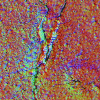









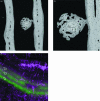
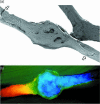

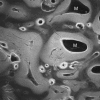

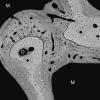
References
-
- Bathe AP, Collings AS, Boyde A. Ex-vivo study into the microstructural effects of extracorporeal shock wave therapy on equine bone. Proceedings of the European College of Veterinary Surgery.2001.
-
- Bathe AP, Boyde A. Morphometric studies of distal tarsal bone modelling in Thoroughbred racehorses. J. Bone Min. Res. 2002;17:942. (Abstract OC2).
-
- Bentolila V, Boyce TM, Fyhrie DP, Drumb R, Skerry TM, Schaffler MB. Intracortical remodeling in adult rat long bones after fatigue loading. Bone. 1998;23:275–281. - PubMed
-
- Boyce TM, Fyrhie DP, Glotkowski MC, Radin EL, Schaffler MB. Damage type and strain mode associations in human compact bone bending fatigue. J. Orthoped. Res. 1998;16:322–329. - PubMed
-
- Boyde A, Maconnachie E. Volume changes during preparation of mouse embryonic tissue for scanning electron microscopy. Scanning. 1979;2:149–163.
Publication types
MeSH terms
LinkOut - more resources
Full Text Sources
Other Literature Sources
Medical

